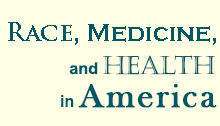Education
Higher Education Module
Race, Medicine, and Health in America
Class 5: The 1995 Heat Wave
Introduction
Across the Midwest and Northeast, the summer of 1995 was one of the hottest on record. In Chicago’s Lawndale community residents were forced with a life or death dilemma: should they pay their rent or continue to use air-conditioning during the height of the heat wave? The fear of high utility bills on a fixed income was a real deterrent. Most of the heat-related deaths in Chicago that summer were of elderly African American residents, many of whom lived alone. However, it was not just the heat that caused their deaths, but also infrastructure and neighborhood environmental neglect. Some residents feared crime and lack of police protection while others feared injury from cracked sidewalks and poor neighborhood lighting. Those individuals eighty-years of age and older, many of whom outlived social networks and with limited mobility, were among the most vulnerable population groups during the disaster. The 1995 Heat Wave shows the ways in which environmental disasters are not simple events, but reify a host of social and political implications of importance to race, class, gender, and environmental citizenship. Collectively the readings for this class frame health through the lens of environmental disasters; showing the ways in which so-called “natural” disasters are not natural, but imbued with questions of inequality.
Class Resources
Readings
Klinenberg, Eric. Heat Wave: A Social Autopsy of Disaster in Chicago. Chicago: University of Chicago Press, 2003, pp. 37-129; 185-225.
Rozario, Kevin. The Culture of Calamity: Disaster and the Making of Modern America. Chicago: University of Chicago Press, 2007, pp. 75-135.
Steinberg, Ted. Acts of God: The Unnatural History of Natural Disasters in America. New York: Oxford University Press, 2000, pp. xv-xxiii; 3-69.
Discussion Questions:
- For most of the twentieth century the federal government had a minimalist role in the lives of citizens suffering from an environmental disaster. Why did it take such a long time for the federal government to become actively involved in disaster relief?
- Why are heat-related deaths so difficult to identify? What does Eric Klinenberg mean by a “social autopsy of disaster?”
- What role did the media play in highlighting or minimizing the 1995 heat wave disaster in Chicago?
- It was clearly the case that disruption of utility services among the poor led to heat-related deaths in Chicago. In the future, should there be restrictions on the discontinuation of utility services by the local or federal government? In what other ways can we prevent deaths from what is arguably the most common environmental disaster?


